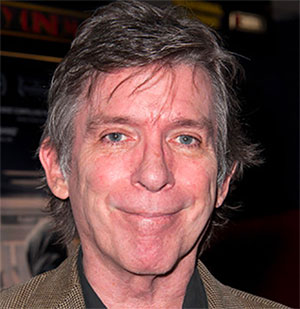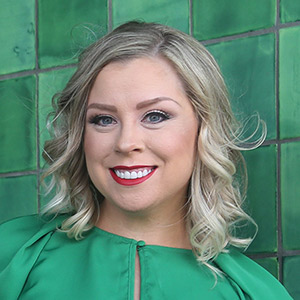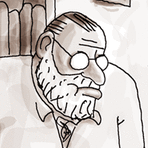Entertainment
/ArcaMax

Tom Hiddleston 'open' to starring in a musical
Tom Hiddleston is "always open" to starring in a musical.
The 44-year-old actor has a number of dance sequences in his latest film 'The Life of Chuck' - in which he plays the adult Charles Krantz - and though it took a lot of work to hone his footwork, he admitted he has long admired movies that feature big musical numbers and he'd be happy to ...Read more

Noah Kahan's rise to success features in new documentary
Noah Kahan is to be the focus of a new documentary.
The 28-year-old singer has seen a surge in popularity in the last few years thanks to his 2022 album 'Stick Season' and its title track, which was a huge hit around the world after going viral on TikTok, and his sudden rise to stardom has been captured in an as-yet unnamed film.
According to ...Read more

Billy Joel 'not dying' amid brain condition
Billy Joel is "not dying", amid his rare brain condition diagnosis.
Radio DJ Howard Stern has told how he recently had dinner with the 76-year-old music icon, who has been diagnosed with Normal Pressure Hydrocephalus (NPH), a rare condition caused by a build-up of fluid in the brain, and Billy urged Howard to tell people he won't be meeting his...Read more

Cardi B 'would have killed' Offset if they'd stayed together
Cardi B would have "ended up killing" Offset if they were still together.
The 32-year-old rapper married the Migos star - with whom she has children Kulture, six, Wave, three, and eight-month-old Blossom - in 2017 but filed for divorce until 2020, though they later continued an on/off relationship before parting for good in July last year, and ...Read more

Jessie J diagnosed with breast cancer and reveals surgery plans
Jessie J has been diagnosed with "early" breast cancer - and she will undergo surgery later this month.
The 37-year-old singer took to social media to reveal she received the medical news before her new single, 'New Secrets', dropped on April 25th, and she has been "in and out of tests" since.
She said in an Instagram video: "Before 'No ...Read more

Meghan, Duchess of Sussex put As Ever on 'pause' until it was 'stable'
Meghan, Duchess of Sussex has "paused" her lifestyle brand until it is "completely stable".
The former 'Suits' star launched her first As Ever products in April and the collection - which included jams, teas, and biscuits - sold out in just 45 minutes, and the duchess suggested she needed the time to put a strategy in place to scale up ...Read more

Bethenny Frankel: I look like a train wreck most of the time
Bethenny Frankel looks like "a train wreck most of the time".
The 54-year-old reality TV star recently wore a thong bikini bottom at the Sports Illustrated Swimsuit Swim Week runway show in Miami, and Bethenny believes there's an unhealthy fascination with her appearance.
In a video posted on Instagram, Bethenny explained: "I guess we have to ...Read more

Cynthia Nixon bemoans Sex and The City for being 'incredibly white'
Cynthia Nixon disliked how "incredibly white" 'Sex and The City' was.
The 59-year-old actress played Miranda Hobbes in the hit HBO series, but Cynthia thinks 'Sex and The City' wasn't reflective of the real world.
Speaking to Sky News, the actress explained: "The one thing that didn't really sit well with me in the past was how incredibly ...Read more

Man arrested after breaking into grounds of Windsor Castle
A man has been arrested for allegedly trespassing in the grounds of Windsor Castle.
The Metropolitan Police and Thames Valley Police have both launched investigations after the intruder was found on the grounds of the royal residence over the weekend.
A Metropolitan Police spokesperson said in a statement: "A man in his 30s has been arrested ...Read more

Maria Shriver is 'open' to finding love
Maria Shriver is "open" to finding love again.
The 69-year-old author - who was married to Hollywood star Arnold Schwarzenegger between 1986 and 2021 - isn't actively looking for love at the moment, but she's remaining open-minded about her future.
Maria said on the 'Jamie Kern Lima Show': "I'm a frustrated matchmaker myself, and I'm a big ...Read more

Shaun White and Nina Dobrev are 'are having fun with wedding planning'
Shaun White and Nina Dobrev are "excited" to plan their wedding.
The loved-up couple got engaged in 2024, and they've recently relished the experience of planning their wedding together.
Shaun, 38, told People: "It's very exciting to have new aspirations and new things that we're going after and together. It's very humbling and very exciting, ...Read more

Kylie Jenner reveals details of her breast enlargement
Kylie Jenner has shared details of her breast enlargement surgery.
The 27-year-old beauty has revealed specific details about her surgery, after being asked a series of questions by a TikTok follower.
Rachel Leary, the follower, said to Kylie on the video-sharing app: "You have got what I am looking for to have done, in terms of like, a boob ...Read more

Sound Advice: Bargain price headphones and Panasonic TV deals
Full-featured headphones for $34.99: When I wrote about Cambridge Audio's Melomania P100 headphones last week I knew not everybody would want to spend $239, no matter how good they are. The EarFun Wave Life headphones are a solid budget buy for everyone else, and those who already own pricey headphones may find them perfect for the gym, for kids...Read more

Fortune Feimster and Jacquelyn 'Jax' Smith are heading for divorce after 5-year marriage
LOS ANGELES — Fortune Feimster and her wife of five years, Jacquelyn “Jax” Smith, are divorcing, the former couple posted Monday on social media.
“Together, we have made the difficult decision to end our marriage,” they wrote in a statement posted on their Instagram accounts. “We’ve been separated for a little bit, both of us ...Read more

The CW will broadcast Savannah Bananas baseball madness as network leans into live sports
LOS ANGELES — Baseball isn’t boring and the CW isn’t stupid, at least when it comes to the Savannah Bananas, the Georgia-based team that has rewritten the rules around the classic American pastime. The network has picked up rights to broadcast the July 27 Bananas game at Citizen’s Bank Park in Philadelphia.
“Banana Ball” ...Read more

Al Foster, jazz drummer for Miles Davis and Sonny Rollins, dies at 82
LOS ANGELES — Al Foster, the jazz drummer who performed in groundbreaking bands with Miles Davis, Herbie Hancock and Sonny Rollins, has died. He was 82.
Foster's partner Bonnie Rose Steinberg told NPR in a statement that Foster died "from a serious illness" at his home in New York City. Foster's daughter, Kierra Foster-Ba, confirmed the death...Read more

Sean Baker demands 'full control' over film projects
Sean Baker wants "full autonomy" over all of his films.
The 54-year-old filmmaker enjoyed huge success as the director of 'Anora', the romantic-comedy drama movie, in 2024, and Sean has now confirmed that his next project will be "in the same wheelhouse".
During an appearance on the 'It Happened in Hollywood' podcast, Sean shared: "Don't ...Read more

I was discouraged from pursuing my dreams, says Arnold Schwarzenegger
Arnold Schwarzenegger was "discouraged" from pursuing success in Hollywood.
The 77-year-old actor turned his focus towards the American movie business after he retired from bodybuilding in the 1970s - but Schwarzenegger was warned at the time that his ambitions were unrealistic.
Speaking to his son Patrick Schwarzenegger, for Variety's Actors ...Read more

Patrick Schwarzenegger considered adopting an alias
Patrick Schwarzenegger considered adopting an "alias" earlier in his career.
The 31-year-old actor - who is the son of Hollywood icon Arnold Schwarzenegger and Maria Shriver - actually thought about adopting another name in order to distinguish himself from his family.
Speaking to his dad, for Variety's Actors on Actors series, Patrick ...Read more

Sarah Jessica Parker: Women don't flat line at 50 or 60
Sarah Jessica Parker wants to remind the public that women "don't flat line at 50 or 60".
The 60-year-old actress has reprised the role of Carrie Bradshaw to star in the latest season of 'And Just Like That...', the 'Sex and the City' revival series, and Sarah is determined to spread an inspiring message through the TV show.
She told Sky News:...Read more
Inside Entertainment News
Popular Stories
- Roseanne Barr trapped under a tree following horror crash
- NBA star Steph Curry says he struggles with impostor syndrome
- Ruby Rose claims she's trying to stay alive' in a series of troubling allegations
- 28 Years Later director Danny Boyle addresses Cillian Murphy's absence
- Sound Advice: Bargain price headphones and Panasonic TV deals











